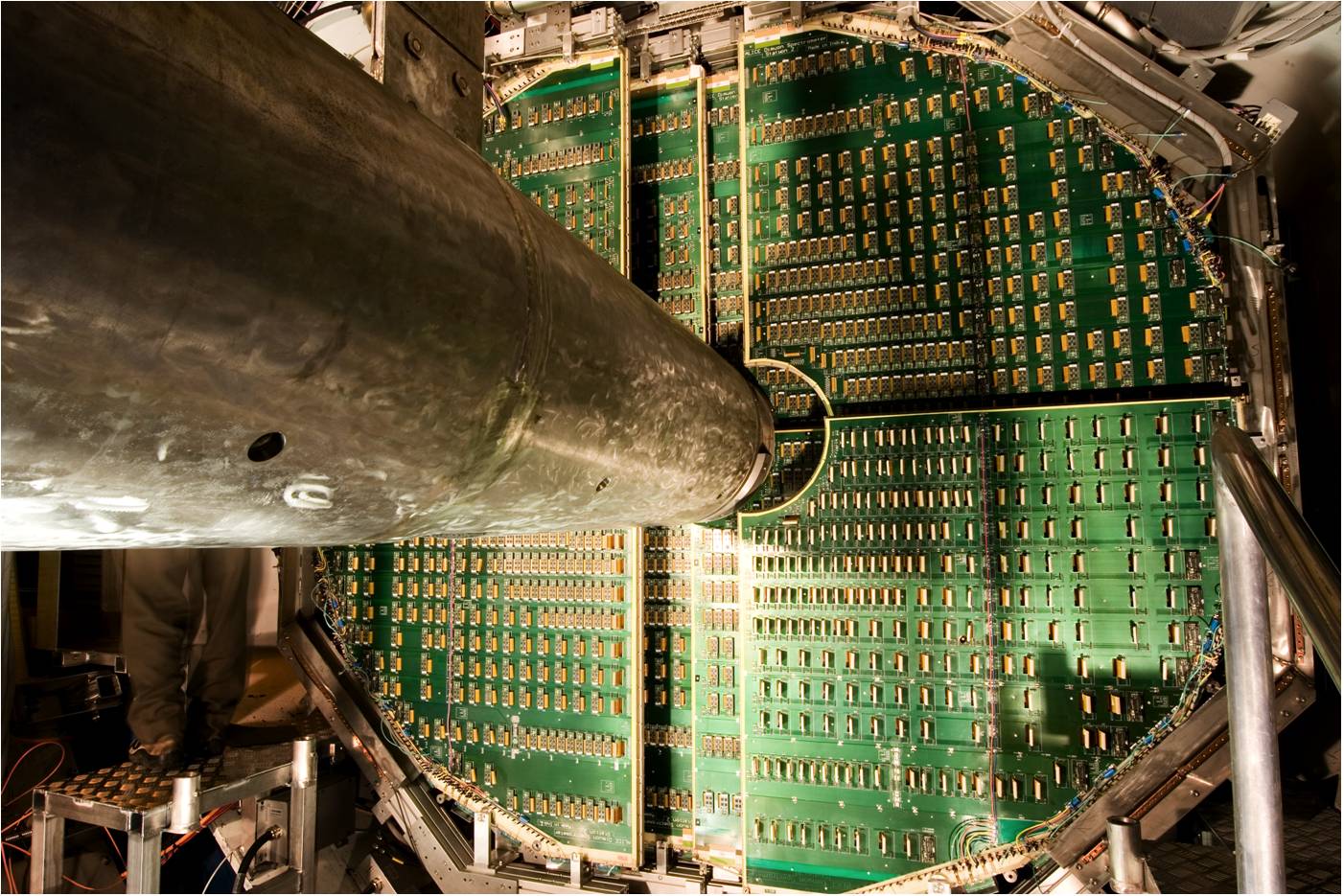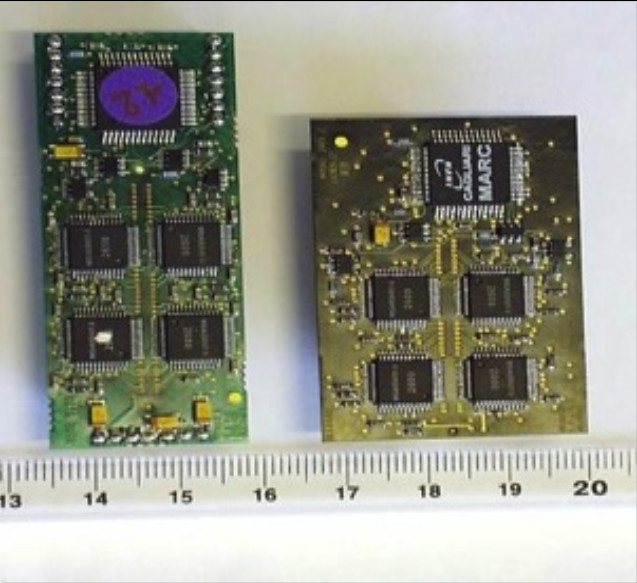
Muon tracking chambers in ALICE


MANAS electronic chip: 16-channel Amplifier, shaper, track-and-hold. Reads 1.1 million pads of tracking chambers of ALICE
Collaboration: India, France, Italy, Russia
Station 2 - Made in India
- 5 stations of two Cathode Pad Chambers ~ 100 m2
- \(1.1\times 10^6\) channels, occupancy \(\lt\) 5% (in Pb+Pb)
- Read out at 1 kHz
- Chamber thickness \(\sim\)3% \(X_0\)
- Beam test results for the spatial resolution : 50 \(\mu\)m for a required resolution < 100 \(\mu\)m
The muon tracking system is based on low thickness cathode pad chambers. The chambers are arranged in five stations (each of 2 chambers), two of the stations placed before, one inside and two after the dipole. To keep the occupancy at the 5% level, a high segmentaion of the readout pads is needed, leading to a total of about one million channels. The chambers have a position resolution of about 70 microns in the bending direction and 800 microns in the non-bending direction. The frontend pulse processing of all the channels is done by MANAS chip which include preamplifier, a shaper and a multiplexer. Saha Institute of Nuclear Physics,Kolkata is instrumental in the design and fabrication of the MANAS chip. The station two muon tracking spectrometer has been designed and built in India by the the Saha Institute and Aligarh Muslim University.
The trigger system is designed to select heavy quark resonance decays. The selection is made on the trans-verse momentum on individual muons. Four planes ofresistive plate chambers (RPCs) arranged in two sta-tions and positioned behind a passive muon filter pro-vide the transverse momentum of each muon.